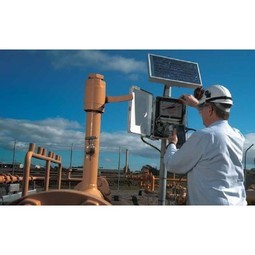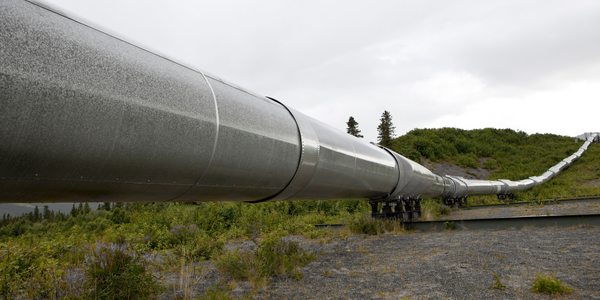Customer Company Size
Large Corporate
Region
- America
Country
- United States
Product
- Sphera Essential Suite software
- Sphera Environmental Performance Solution
- Sphera CyberRegs
Tech Stack
- Environmental Management System (EMS)
- Mobile devices for data entry
Implementation Scale
- Enterprise-wide Deployment
Impact Metrics
- Productivity Improvements
- Environmental Impact Reduction
- Digital Expertise
Technology Category
- Application Infrastructure & Middleware - Data Exchange & Integration
Applicable Industries
- Oil & Gas
- Utilities
Applicable Functions
- Maintenance
- Quality Assurance
Use Cases
- Regulatory Compliance Monitoring
- Remote Asset Management
- Predictive Maintenance
Services
- System Integration
- Data Science Services
About The Customer
CenterPoint Energy, Inc., headquartered in Houston, Texas, is a domestic energy delivery company that includes electric transmission & distribution, natural gas distribution, competitive natural gas sales and services, interstate pipelines and field services operations. Since its launch as a stand-alone company in 2002, the company has been committed to the highest-quality energy delivery, while operating in an environmentally responsible manner. Its leadership team is intent on ensuring that their facilities are in compliance with current regulations and that their management team is actively partnering with other organizations in the development of future environmental laws and industry best practice guidelines.
The Challenge
In 2010, CenterPoint Energy stepped up to address one especially critical environmental management challenge facing US energy companies – global climate change. The company’s Greenhouse Gas (GHG) Program team began implementation of an enterprise-level Environmental Management System (EMS) that is significantly enhancing their ability to maintain compliance with mandatory government regulations as well as voluntary sustainability reporting. CenterPoint Energy had previously managed its environmental reporting processes with hundreds of spreadsheets that were separately developed and maintained at its many facilities. But, to meet more rigorous information management demands imposed by a new generation of regulations, including the Environmental Protection Agency’s (EPA’s) GHG Mandatory Reporting Rule (MRR), and voluntary reporting to non-governmental organizations such as the Carbon Disclosure Project (CDP), senior managers realized that complying with these complex new requirements using spreadsheets would be inefficient and potentially risky.
The Solution
CenterPoint Energy experts evaluated leading systems on the market and selected Sphera Essential Suite software – part of the Sphera Environmental Performance Solution™ – to serve as the foundation for the company’s EMS. Since concern about proliferating state and federal mandates was a primary driver for this project, CenterPoint Energy’s team also implemented Sphera CyberRegs® as part of their new Environmental Management System. With Sphera CyberRegs – an online regulatory content service that is integrated with Sphera Essential Suite – they can track regulatory requirements and facilitate the assignment and tracking of tasks at the operational level to ensure end-to-end compliance. CenterPoint Energy’s environmental management team is also introducing technology innovations to enhance the quality and timeliness of its data. Mobile devices are helping them improve data integrity by eliminating the need to fat-finger data into spreadsheets, which would eventually cause a problem with those calculations.
Operational Impact
Quantitative Benefit

Case Study missing?
Start adding your own!
Register with your work email and create a new case study profile for your business.
Related Case Studies.

Case Study
Taking Oil and Gas Exploration to the Next Level
DownUnder GeoSolutions (DUG) wanted to increase computing performance by 5 to 10 times to improve seismic processing. The solution must build on current architecture software investments without sacrificing existing software and scale computing without scaling IT infrastructure costs.

Case Study
IoT Solutions for Smart City | Internet of Things Case Study
There were several challenges faced: It is challenging to build an appliance that can withstand a wide range of voltage fluctuations from as low at 90v to as high as 320v. Since the device would be installed in remote locations, its resilience was of paramount importance. The device would have to deal with poor network coverage and have the ability to store and re-transmit data if networks were not available, which is often the case in rural India. The device could store up to 30 days of data.

Case Study
Automation of the Oguz-Gabala-Baku water pipeline, Azerbaijan
The Oguz-Gabala-Baku water pipeline project dates back to plans from the 1970’s. Baku’s growth was historically driven by the booming oil industry and required the import of drinking water from outside of the city. Before the construction of the pipeline, some 60 percent of the city’s households received water for only a few hours daily. After completion of the project, 75 percent of the two million Baku residents are now served around the clock with potable water, based on World Health Organization (WHO) standards. The 262-kilometer pipeline requires no pumping station, but uses the altitude differences between the Caucasian mountains and the capital to supply 432,000 m³/d to the Ceyranbatan water reservoir. To the people of Baku, the pipeline is “the most important project not only in 2010, but of the last 20 years.”

Case Study
GPRS Mobile Network for Smart Metering
Around the world, the electricity supply industry is turning to ‘smart’ meters to lower costs, reduce emissions and improve the management of customer supplies. Smart meters collect detailed consumption information and using this feedback consumers can better understand their energy usage which in turn enables them to modify their consumption to save money and help to cut carbon emissions. A smart meter can be defined in many ways, but generally includes an element of two-way communication between the household meter and the utility provider to efficiently collect detailed energy usage data. Some implementations include consumer feedback beyond the energy bill to include online web data, SMS text messages or an information display in consumers’ premises. Providing a cost-effective, reliable communications mechanism is one of the most challenging aspects of a smart meter implementation. In New Zealand, the utilities have embraced smart metering and designed cost effective ways for it to be implemented. The New Zealand government has encouraged such a move to smart metering by ensuring the energy legislation is consistent with the delivery of benefits to the consumer while allowing innovation in this area. On the ground, AMS is a leader in the deployment of smart metering and associated services. Several of New Zealand’s energy retailers were looking for smart metering services for their residential and small business customers which will eventually account for over 500,000 meters when the multi-year national deployment program is concluded. To respond to these requirements, AMS needed to put together a solution that included data communications between each meter and the central data collection point and the solution proposed by Vodafone satisfied that requirement.

Case Study
Remote Wellhead Monitoring
Each wellhead was equipped with various sensors and meters that needed to be monitored and controlled from a central HMI, often miles away from the assets in the field. Redundant solar and wind generators were installed at each wellhead to support the electrical needs of the pumpstations, temperature meters, cameras, and cellular modules. In addition to asset management and remote control capabilities, data logging for remote surveillance and alarm notifications was a key demand from the customer. Terra Ferma’s solution needed to be power efficient, reliable, and capable of supporting high-bandwidth data-feeds. They needed a multi-link cellular connection to a central server that sustained reliable and redundant monitoring and control of flow meters, temperature sensors, power supply, and event-logging; including video and image files. This open-standard network needed to interface with the existing SCADA and proprietary network management software.








